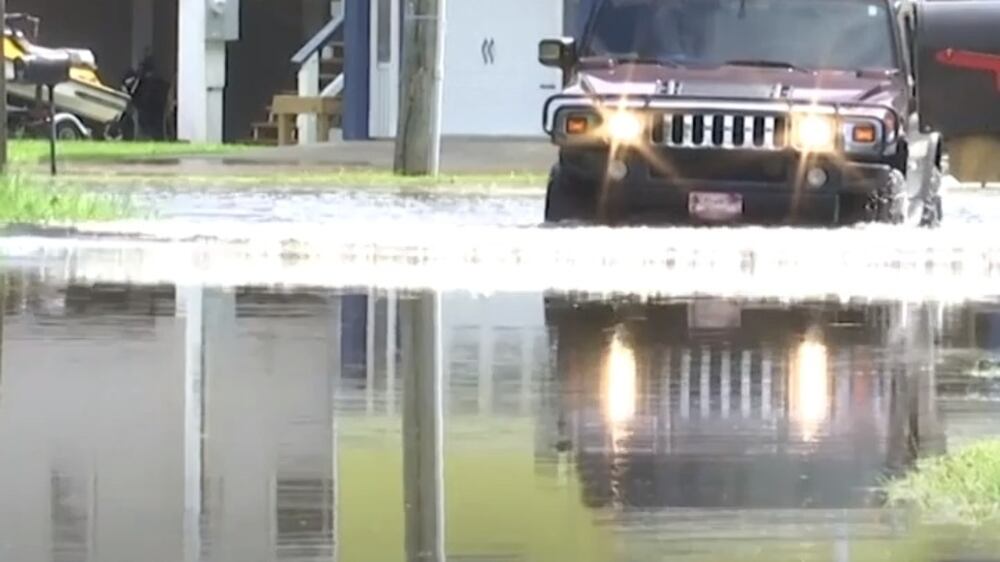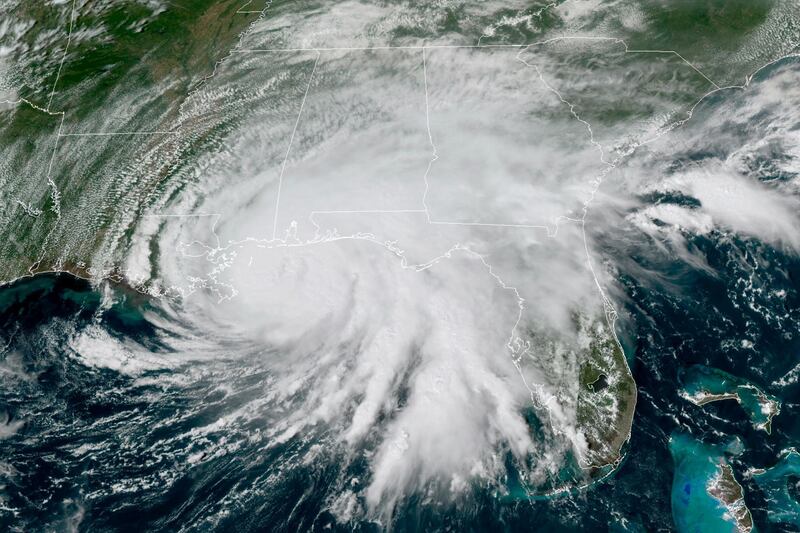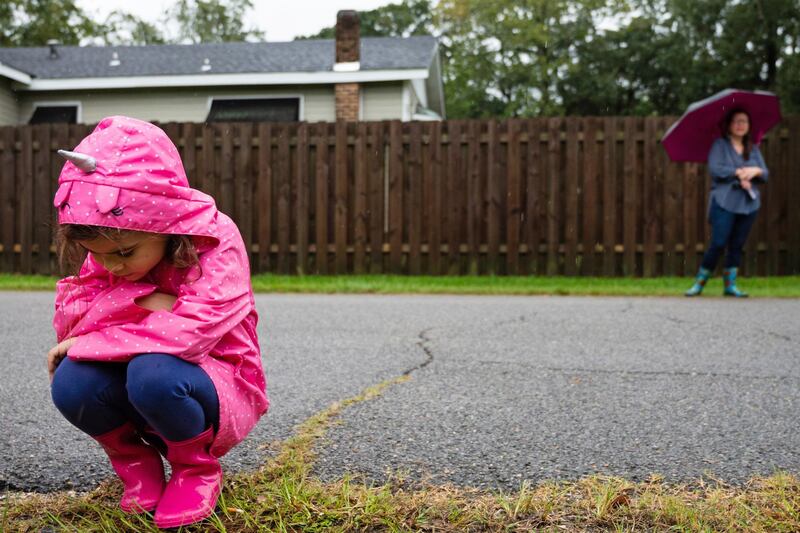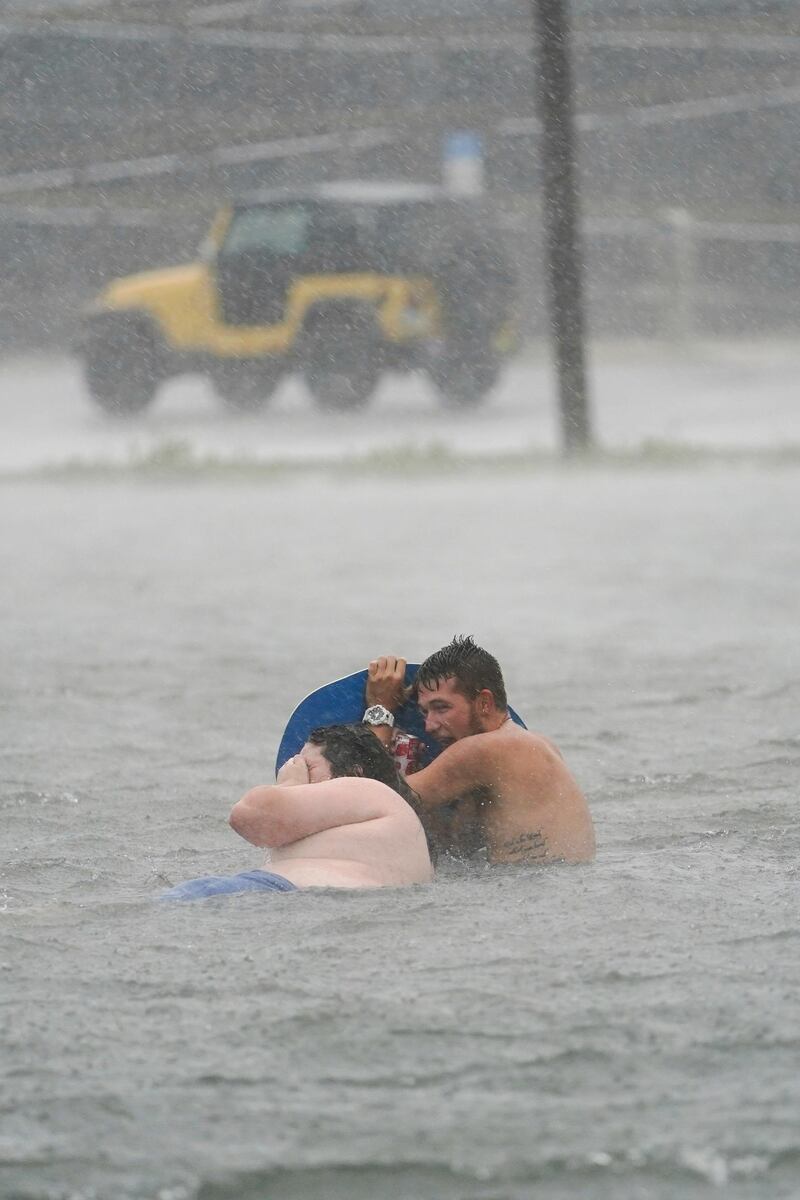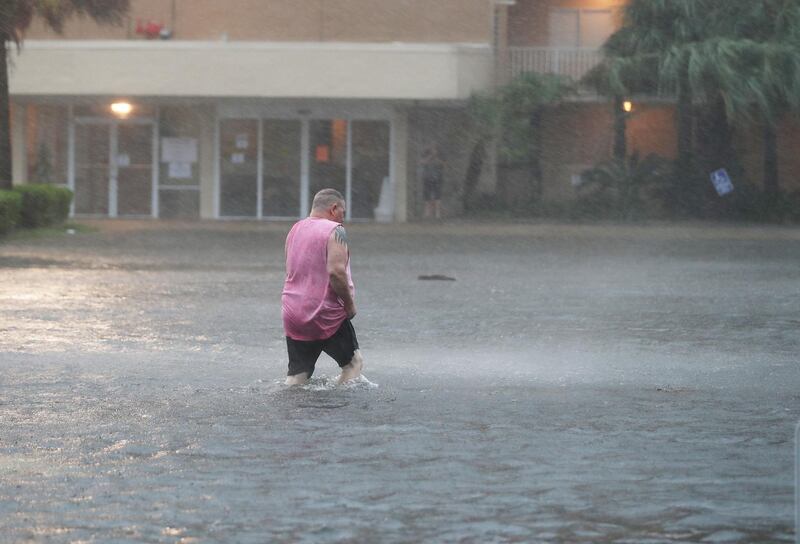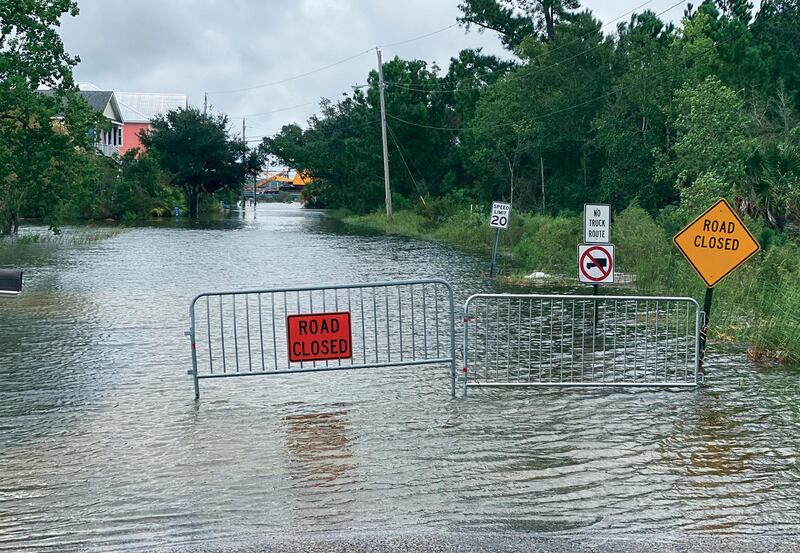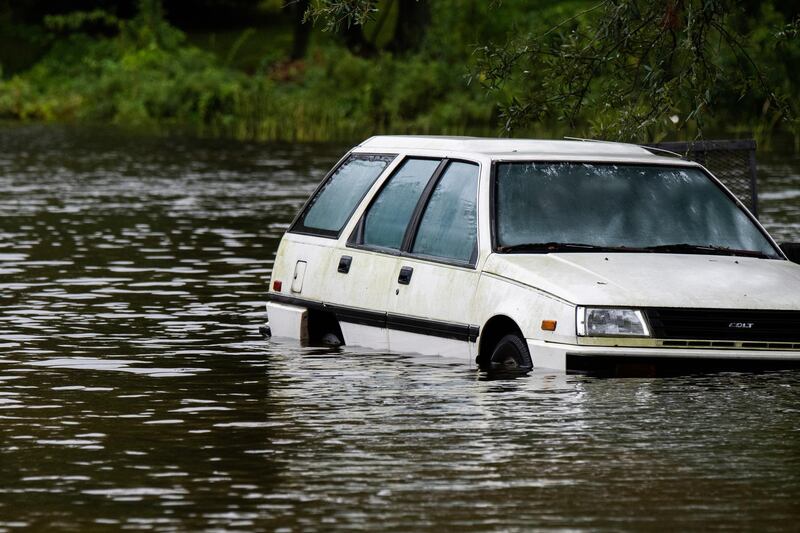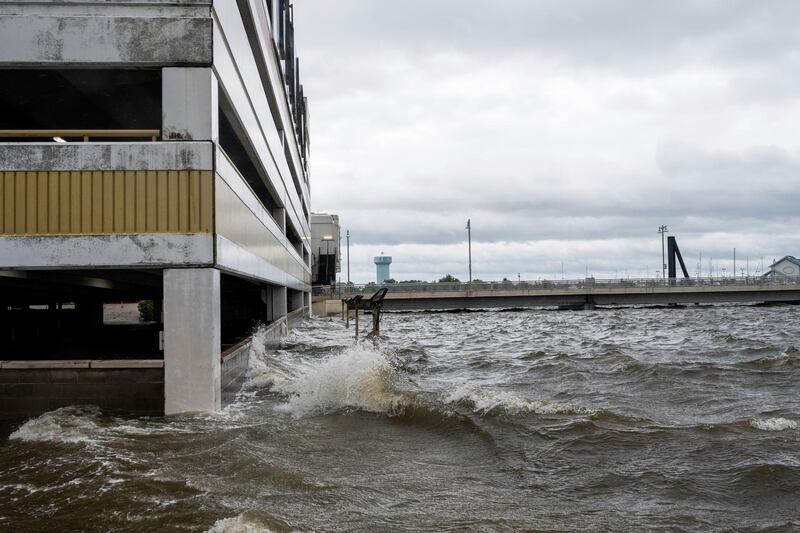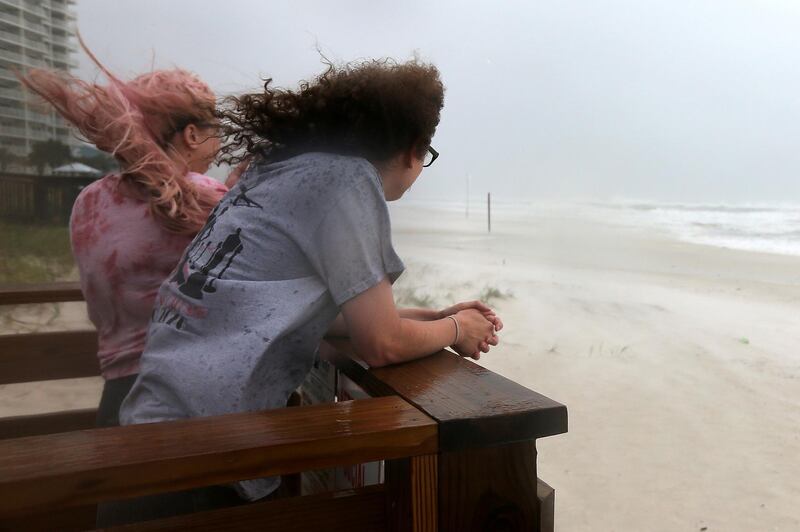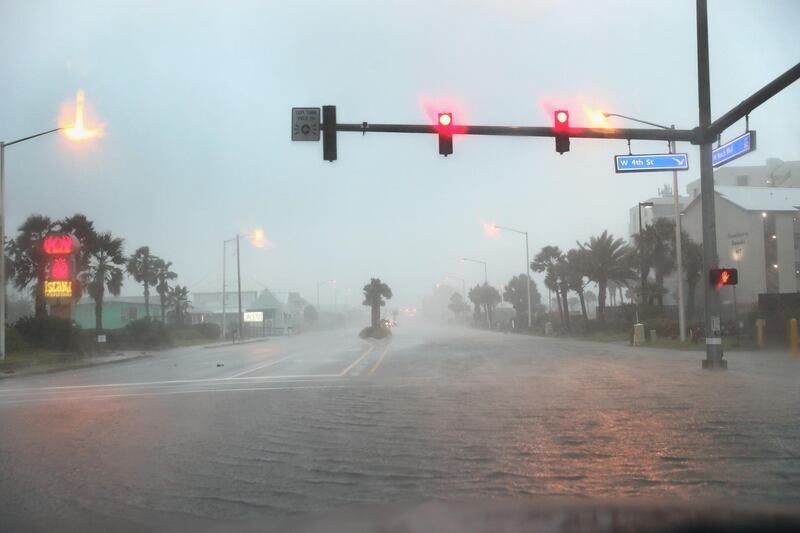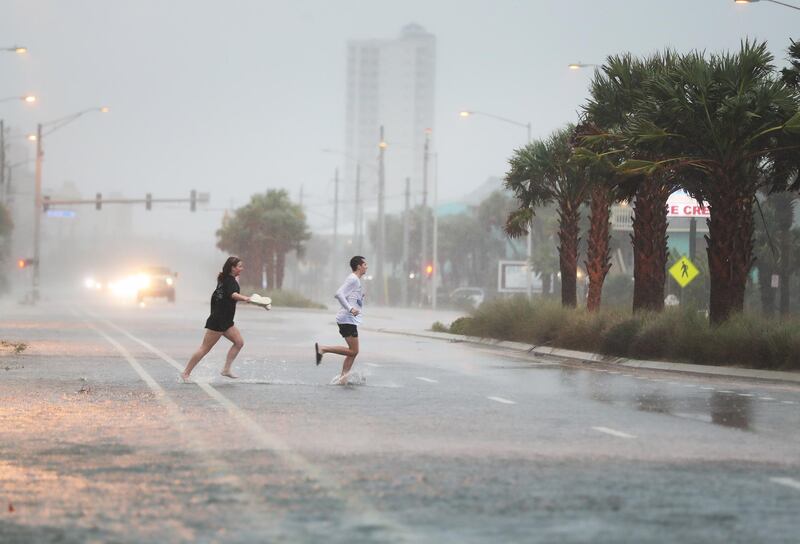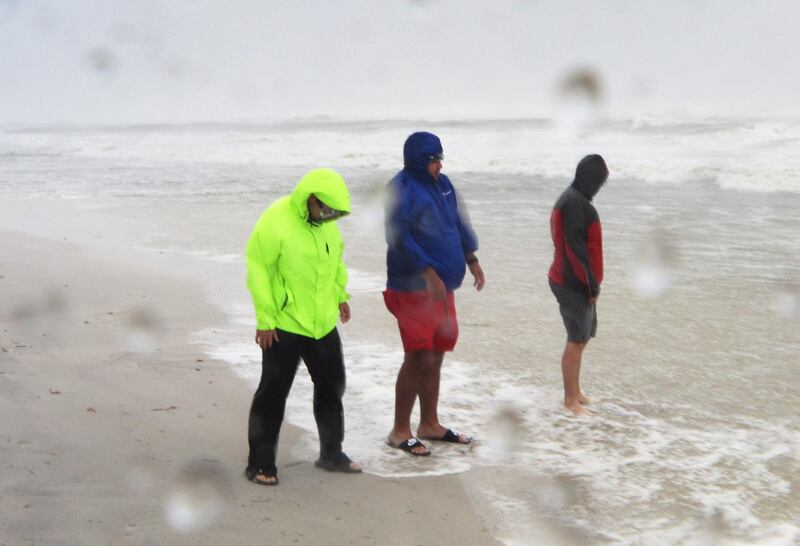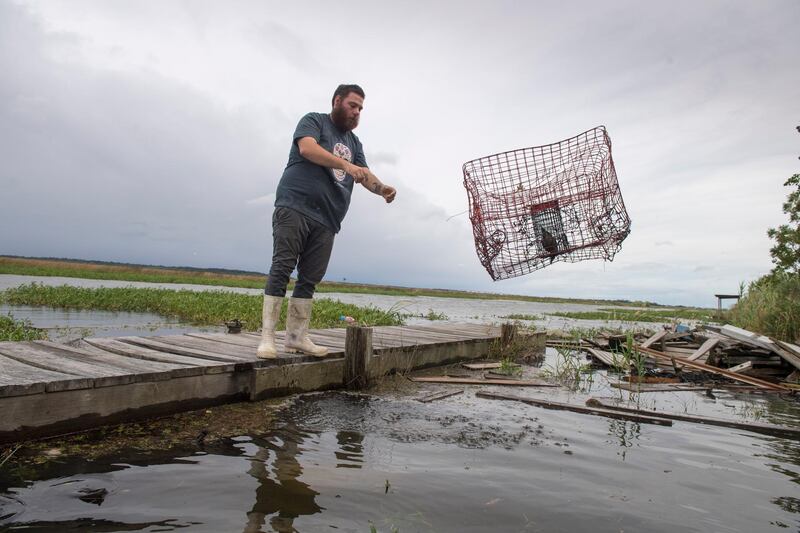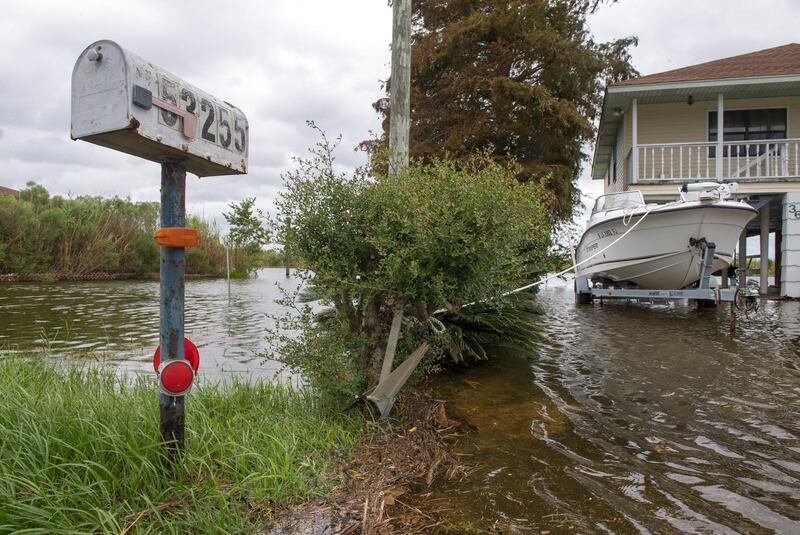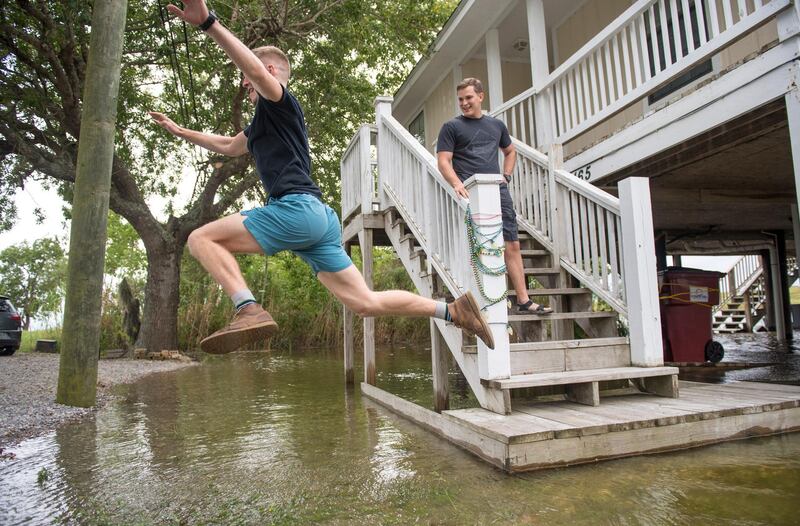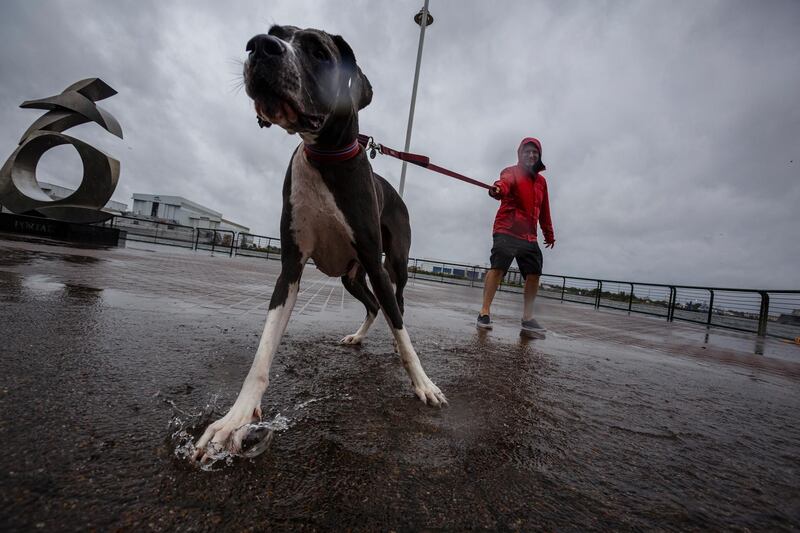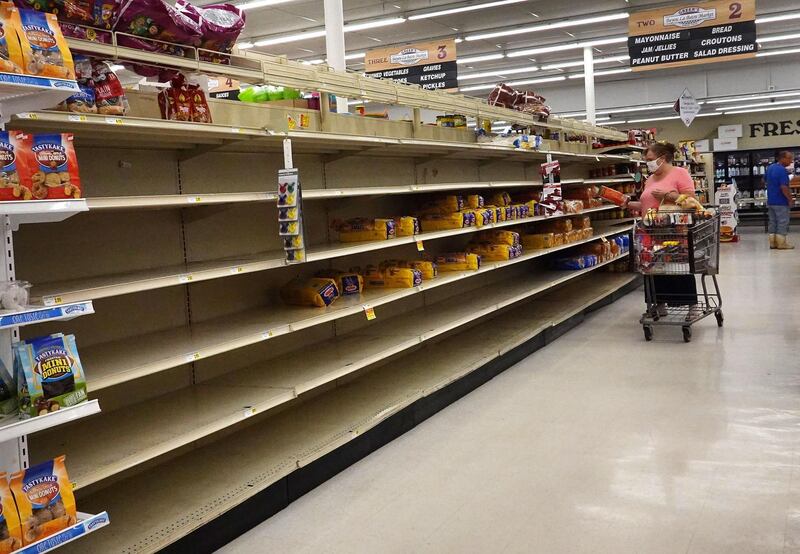Hurricane Sally moved north-east on Thursday after uprooting trees, flooding streets and cutting power to hundreds of thousands of homes and businesses on the US Gulf coast.
The hurricane, which made landfall early on Wednesday near Gulf Shores, Alabama, as a Category 2 storm on the five-step Saffir-Simpson scale of intensity, was downgraded in the afternoon to a tropical storm as maximum sustained winds dropped to 113 kilometres per hour.
The storm is believed to have killed one person in Alabama.
"We had a body wash up, we believe it was hurricane-related, but we have no definitive proof of that right now," said Trent Johnson, a police lieutenant in Orange Beach, Alabama.
Some areas received more than 46 centimetres of rain over the previous 24 hours, causing what the National Hurricane Center (NHC) described as "historic and catastrophic" flooding on the Alabama-Florida coast.
Hurricane Sally lashes Alabama and Florida with heavy rain

The coastal community of Pensacola, Florida, experienced up to 1.5 metres of flooding, and travel was cut by damaged roads and bridges. More than 500,000 homes and businesses across the area were without power as the storm knocked over stately oak trees and ripped power lines from poles.
Several residents along the Alabama and Florida coasts said damage from the slow-moving storm caught them off guard.
Jordan Muse, 35, was working the 3am to 11am shift at the Holiday Inn in Pensacola, Florida, when flooding peaked at about 8 am. The hotel was without power and water.
“Our manager didn’t think it was gonna be this bad. It was just so much rain and the winds were tremendous,” she said. The hotel had some supplies, but Mr Muse said people quickly took everything that was available.
A section of the Pensacola Bay Bridge, known also as the "Three Mile Bridge," was missing a "significant section," Florida Governor Ron DeSantis said.
"The rain is what stands out with this one: It's unreal," said Cavin Hollyhand, 50, who left his home on a barrier island and took shelter in Mobile, Alabama, where he viewed the damage on Wednesday. Some isolated areas could experience up to 89cm of rain before Sally is done, the NHC said.
On landfall at Gulf Shores, Sally's winds were clocked at 169kph. Along the coast, piers were ripped away by the storm surge and winds.
Alabama Governor Kay Ivey told residents not to go outside to check on damage unless necessary, and to stay away from live power lines and fallen trees.
"We had strong winds for a long period of time," said Grant Saltz, 38, a resident, as he took a break from clearing debris outside his Mobile restaurant. "Instead of a few hours, we got it for 12 hours."
In Pensacola, where wind gusts were clocked at 124kph at one point, images on social media showed major floods. One witness reported hailstorms in the city as well and the NHC warned of possible tornadoes.
Pensacola police warned of high winds and urged residents not to drive around looking at damage.
Electrical crews from other states arrived in Pensacola as utilities began restoring power to about 570,000 homes and businesses in Alabama and Florida, according to local utilities.
“This year we’ve just got hurricane after hurricane,” said Matt Lane, 23, a member of a crew from New Hampshire Electric Co-op, who arrived late on Tuesday directly from Hurricane Laura recovery efforts in Texas.
Sally was the 18th named storm in the Atlantic this year and the eighth of tropical storm or hurricane strength to hit the United States. There are currently three other named storms in the Atlantic, highlighting one of the most active Atlantic hurricane seasons on record.
"We've only got one name left," said Jim Foerster, chief meteorologist at DTN, an energy, agriculture and weather data provider, referencing the procedure to name storms and the prospect of running out of letters.
"That's going to happen here soon, Wilfred, and then we'll be into the Greek alphabet."
Hurricanes have increased in intensity and destructiveness since the 1980s as the climate has warmed, according to researchers at the US National Oceanic and Atmospheric Administration.
Damage from Sally is expected to reach $2 billion to $3 billion, said Chuck Watson of Enki Research, which tracks tropical storms and models the cost of their damage. That estimate could rise if the heaviest rainfall happens over land, Watson said.
As the storm moved east and inland, ports on the western Gulf Coast were reopened to travel and energy companies were beginning to return crews to offshore oil platforms.
Sally shut more than a quarter of US Gulf of Mexico offshore oil and gas production. Two coastal oil refiners halted or slowed operations, adding to existing power cuts from last month's Hurricane Laura and demand losses from the coronavirus pandemic.
Hurricane Sally carries 160kph winds as it moves towards US Gulf coast
